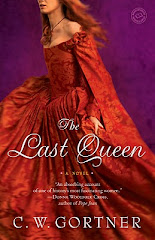 ime before the rise of an era of unspeakable darkness, when the city was a fabled cosmopolitan smorgasbord full of vibrancy- an international magnet for artists, bohemians, eccentrics, and the curious. The Berlin we know today is very different from the Berlin of before World War II and Paul Grossman’s THE SLEEPWALKERS offers us a superb evocation of that city’s pathos and tragic hedonism in the weeks leading up to Hitler’s ascendancy, even as a resolute Jewish detective hunts for a killer.
ime before the rise of an era of unspeakable darkness, when the city was a fabled cosmopolitan smorgasbord full of vibrancy- an international magnet for artists, bohemians, eccentrics, and the curious. The Berlin we know today is very different from the Berlin of before World War II and Paul Grossman’s THE SLEEPWALKERS offers us a superb evocation of that city’s pathos and tragic hedonism in the weeks leading up to Hitler’s ascendancy, even as a resolute Jewish detective hunts for a killer.As the title suggests, this is more than a novel about a series of bizarre murders that Grossman’s hero, Detective Willi Krauss, is trying to solve. All of Berlin appears to be sleep-walking, seemingly oblivious to the endemic violence lurking under the surface, epitomized by Nazi thugs and opportunistic politicians scheming to rescue Germany from decades of penury and shame. Krauss, however, senses these fearsome undercurrents, even as he is swept up in a labyrinthine quest to discover why a young woman pulled from the river was subjected to horrific medical experiments. Revered for his recent capture of an infamous serial killer yet haunted by personal loss, Krauss is now beginning to experience a subtle but pervasive fraying of his impermeability. His keen observations of the shifting world around him anchor the novel’s dark, fascinating trajectory into both the high-ranking offices of a crumbling government and Berlin's seamy underworld.
The supporting cast of characters includes an enigmatic prostitute, an extravagant hypnotist, an earnest cadet, a jaded aristocrat, and a street hustler. While some of the characters conform to established cliches, Grossman handles them with sensitivity and style, while his villains— including a terrifying, buck-toothed Josef Mengele—display the sociopathic tendencies which became a Nazi blueprint and are all the more unsettling because they are not fictional. Fast-paced action sequences interspersed with Krauss’s uneasy awareness that the life he’s always believed in is turning to quicksand under his feet give the novel a brooding, unstoppable feel that kept me reading far into the night. Though Krauss fights with every part of his being to halt the shadow sweeping over him, and everyone he loves, we know the inevitable outcome; it is a testament to Mr Grossman's talent that despite this, we still find ourselves rooting for his idealistic, damaged hero, caught up in circumstances far beyond his control, like so many thousands of Germany's inhabitants.
THE SLEEPWALKERS is now available in paperback from St Martin's Press.





















